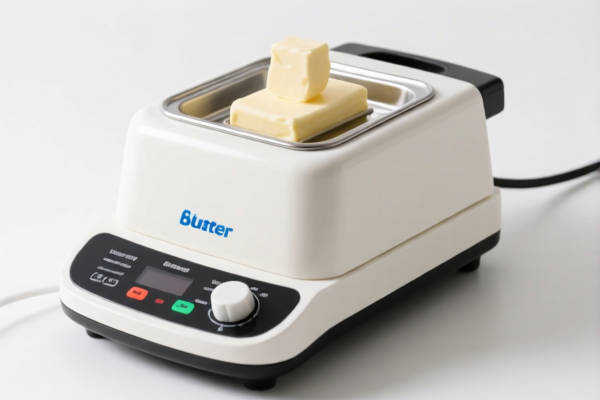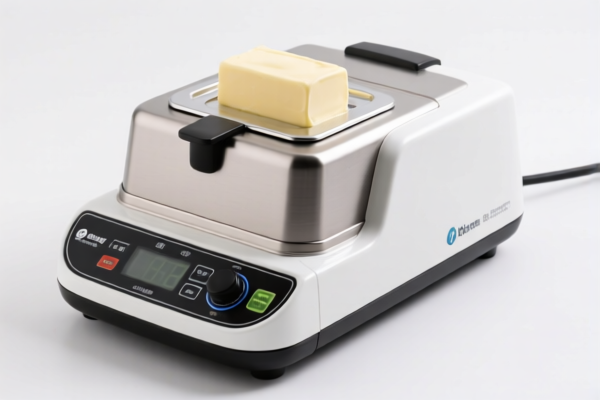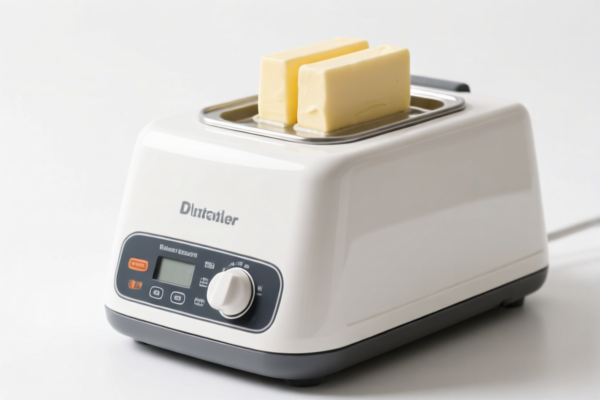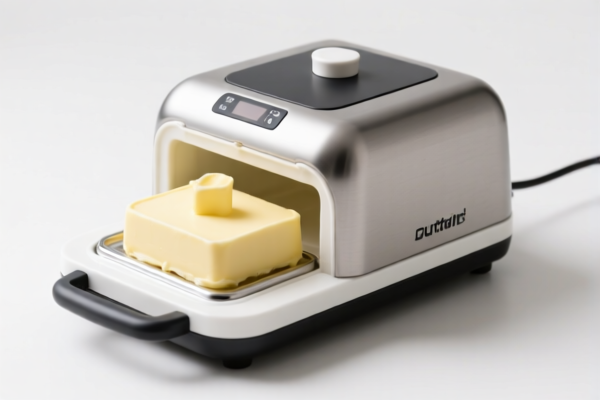| HS Code | Official Doc | Tariff Rate | Origin | Destination | Effective Date |
|---|---|---|---|---|---|
| 8438600000 | Doc | 55.0% | CN | US | 2025-05-12 |
| 8438100010 | Doc | 37.5% | CN | US | 2025-05-12 |
| 8479820040 | Doc | 55.0% | CN | US | 2025-05-12 |
| 8509400040 | Doc | 34.2% | CN | US | 2025-05-12 |
| 8509400025 | Doc | 34.2% | CN | US | 2025-05-12 |
| 8508600000 | Doc | 55.0% | CN | US | 2025-05-12 |
| 8508700000 | Doc | 80.0% | CN | US | 2025-05-12 |
| 8543906500 | Doc | 55.0% | CN | US | 2025-05-12 |
| 8543906800 | Doc | 55.0% | CN | US | 2025-05-12 |
| 3924104000 | Doc | 33.4% | CN | US | 2025-05-12 |
| 3924905650 | Doc | 40.9% | CN | US | 2025-05-12 |




Electric Butter Machine
An electric butter machine, also known as a butter churn or butter maker, is a device used to agitate cream until the fat globules separate, forming butter and buttermilk.
Material:
- Body: Typically constructed from stainless steel, plastic (food-grade), or a combination of both. Stainless steel is favored for its durability, hygiene, and ease of cleaning. Older models may feature wood or cast iron components.
- Churning Mechanism: Includes paddles, beaters, or a dasher, usually made of stainless steel or durable plastic.
- Motor: Electric models contain an electric motor, often with variable speed settings.
- Container: Often glass or stainless steel, designed to hold the cream during the churning process.
Purpose:
The primary purpose is to efficiently and consistently produce butter from cream. Manual churning is labor-intensive; electric machines automate this process.
Function:
The machine works by continuously agitating the cream. This agitation breaks down the membranes surrounding the fat globules. As these membranes rupture, the fat molecules coalesce, separating from the liquid portion (buttermilk). The process results in solid butter and liquid buttermilk. Modern machines often include features to aid separation and washing of the butter.
Usage Scenarios:
- Home Use: Small-capacity machines are popular for individuals or families who prefer to make fresh butter.
- Small Farms/Artisan Producers: Used for producing butter on a smaller scale, offering control over ingredients and quality.
- Restaurants/Cafes: Some establishments make butter in-house for enhanced flavor and freshness.
- Educational Purposes: Used in demonstrations of traditional food production methods.
Common Types:
- Traditional Churns (Electric): Mimic the design of older, manual dash churns. Feature a vertical dasher rotating within a container.
- Paddle Churns (Electric): Utilize rotating paddles within a horizontal or angled drum to agitate the cream. These are often more efficient than dash churns.
- Continuous Churns (Electric): Designed for larger volumes, these machines continuously process cream, producing a steady flow of butter. Common in commercial settings.
- Countertop Models: Compact, designed for home use, typically with capacities ranging from 1-5 liters.
- Handheld Electric Mixers (with Whisk Attachment): While not specifically butter machines, handheld mixers with a whisk attachment can be used to churn smaller quantities of cream.
Electric butter machines fall under several potential classifications depending on their specific features and intended use. Here's a breakdown of relevant HS codes based on the provided information:
-
8438600000: This code covers machinery, not specified elsewhere in the chapter, for the industrial preparation or manufacture of food or drink, excluding machinery for extracting or preparing animal or fixed vegetable/microbial fats/oils. Parts thereof are also included. Specifically, it includes machinery for the preparation of fruits, nuts, or vegetables. If the electric butter machine is used in a commercial food processing setting, this could be applicable. Tax Details: Base Tariff: 0.0%, Additional Tariff: 25.0%, Post 2025.4.2 Additional Tariff: 30.0%, Total Tariff: 55.0%.
-
8509400040: This code covers electromechanical domestic appliances with self-contained electric motors (excluding vacuum cleaners heading 8508), specifically food grinders, processors, and mixers. If the electric butter machine is designed for household use and functions as a grinder/processor/mixer, this is a strong possibility. Tax Details: Base Tariff: 4.2%, Additional Tariff: 0.0%, Post 2025.4.2 Additional Tariff: 30.0%, Total Tariff: 34.2%.
-
8509400025: This code also covers electromechanical domestic appliances with self-contained electric motors (excluding vacuum cleaners heading 8508), but specifically other food mixers. If the electric butter machine is a dedicated mixer for household use and doesn't fall neatly into the "grinder/processor" category, this code may be appropriate. Tax Details: Base Tariff: 4.2%, Additional Tariff: 0.0%, Post 2025.4.2 Additional Tariff: 30.0%, Total Tariff: 34.2%.
-
8479820040: This code covers machines and mechanical appliances having individual functions, not specified elsewhere, specifically mixing, kneading, crushing, grinding, screening, sifting, homogenizing, emulsifying, or stirring machines, including mixing, kneading, or stirring machines. If the machine's primary function is mixing/kneading and isn't categorized as a food processor, this could apply. Tax Details: Base Tariff: 0.0%, Additional Tariff: 25.0%, Post 2025.4.2 Additional Tariff: 30.0%, Total Tariff: 55.0%.
According to the provided reference material, the HS code options related to 'electric butter machine' are limited, with only the following 4 found.
It is important to determine whether the electric butter machine is for industrial or domestic use to select the correct HS code. If it is a domestic appliance, 8509400040 or 8509400025 are the most likely options. If it is used in a commercial setting, 8438600000 or 8479820040 may be more appropriate.
Customer Reviews
No reviews yet.